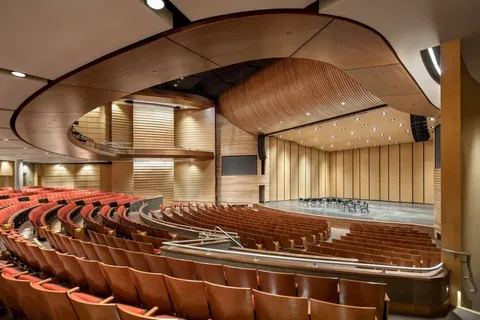Why Theatre Rendering Is Essential for Modern Auditorium Design
Theatre rendering for modern designs is a perfect match. Nowadays, designs are quite complex, which makes them challenging to imagine. But they can be viewed digitally before the construction process starts. The performance stage is now full of advanced acoustics, lighting technology, and is best suited for audience comfort. These things are major things to build a successful modern auditorium design. In the past, architects relied on hand-drawn sketches, but they left small details. Now, all the things are covered through rendering.
The AEC experts get the professional renderings from a reliable Architectural Visualization Company to view 3D visuals of their desired designs. 3D visuals of the imagined design provide clarity. The clients virtually walk through the space and decide on the color and other details. This approach helps clients and team members to communicate without any confusion. However, rendering has now become one of the best tools to visualize building features before it is built.
YOU NEED TO UNDERSTAND WHY THEATRE RENDERING IS ESSENTIAL FOR MODERN AUDITORIUM DESIGN AND USE THIS TOOL FOR FASTER APPROVALS!
Theatre Rendering Explained
Theatre rendering is an advanced approach to visualizing spaces in a 3D format. It helps AEC experts to showcase design with realistic details to their clients and impress them. This way, they get quicker approvals. Plus, they use advanced rendering software to design spaces. Mostly, clients provide pictures of an empty theatre and then get Virtual Staging Services from a reliable source. After that, the experts fill the space with every small detail to every big detail of the interior and exterior. From seating arrangements to the lighting systems, everything is included in the design.
However, relying on modern technology provides highly realistic images and animation of proposed theatre designs. It includes:
- Auditorium
- Stage
- Seating arrangements
- Lobbies
- Ancillary spaces
Importance of Theatre Rendering for Modern Auditorium Design
Enhanced Visualization
The main issue was the use of old methods that consisted of hand-drawn sketches. But with the help of Cinema Rendering, the communication gets better by providing an attractive presentation of the desired design. This directly impacts the decisions of theatre directors, cultural committees, and investors to invest their money.
For a simple explanation, the Theatre rendering takes difficult information in. It converts them into simple 3D images and videos, which are very easy to understand. You do not need to be an expert to view that.
Critical Technical Analysis
Sightline analysis represents one of the most critical applications of modern theatre rendering technology. This process is different from simple geometric measurements. Modern software helps to design every single element of the space. Expert visualizers offer accurate 3D Modeling Services to visualize the exact view from every seat. The simple explanation of this process is that the model can provide the view from both eyes of the audience. In short, it also copies how the body is moving and how it adjusts its position to see the stage.
However, this level of accuracy makes sure that every seat in the auditorium is viewing the best performance area.
Acoustic Simulation
The importance of lighting and acoustics in theatre design should never be neglected. Renderings help designers to experiment with different lighting and conditions. They can easily understand their effects on performances and the audience. Moreover, the sounds can be modeled in advanced acoustic simulation software. It shows how sound will travel all before construction takes place.
Streamlining Stakeholder Communication
Theaters are 3D modeled to enhance the communicative experience of impactful conversations with clients and stakeholders by providing detailed visualization, which clears the cognitive space of the clients. 3D modeling helps all stakeholders understand the design in such a way that there will be no possibility, and no risk of verbal miscommunication on the project.
Accelerating Approvals
When it comes to theatre construction, the process of approvals is quite challenging. It takes extra time to end. But if you rely on the rendering process, the designer can meet local building codes and requirements.
Cost Reduction
Theatre design regularly experiences changes, which in turn increase the overall budget. However, budgeting is easier to fulfill and more accurate in the rendering phase because potential changes can be visualized instead of builders relying on constructed models, which can save a large amount of time and resources.
Material Selection and Visualization
Choosing the right materials is very important to achieve the goals. Rendering provides an accurate representation of finished materials. It becomes easier to make decisions. Plus, visualizers can experiment with different materials to choose the right one.
Marketing Applications
High-quality rendering images and animation are best for marketing your properties. You can present and run an ad campaign to attract customers. It is recommended to promote online on your social accounts.
Conclusion
Theatre rendering is one of the helpful tools for AEC experts. They use it to impress their clients and get faster approvals. If you are new, then you must seek expert assistance. However, it is a good method that saves budget and reduces mistakes.





